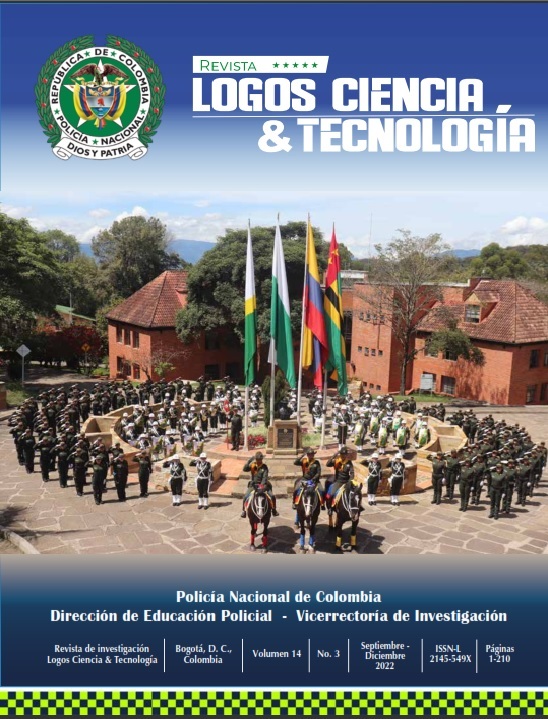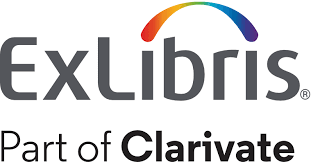Variables associated with digital partner violence in a sample of young adults from Yucatan, Mexico, between 2015 and 2020
DOI:
https://doi.org/10.22335/rlct.v14i3.1609Keywords:
Social media, internet use, Violence victims, cyberviolence, intimate partner violenceAbstract
This study aimed to identify sociodemographic aspects and the time of Internet use that are associated with intimate partner digital violence, as well as the differences between the types of digital violence and the social networks where it occurs. Through an observational study, 340 cases were selected from the database from the document Primera Evaluación de la Violencia Digital en Yucatán (First Evaluation of Digital Violence in Yucatan) and items that measured the variables of interest were taken. It was found that some variables associated with intimate partner digital violence were surveillance (α: <0.001; OR: 10.607), use of email (α: 0.033; OR: 2.787) and use of the Internet 1 or 2 days a week (α: 0.02; OR: 10.5217), while flaming (α: 0.013; OR: 0.405) and teasing and harassment (α: 0.001; OR: 0.371) were associated with other types of digital violence. It was also observed that the LGBTQ community, women and those who spend less time on the internet were more likely to experience digital intimate partner violence than their counterparts. It is concluded that digital violence presents particular elements and differences according to the type of violence experienced. The high prevalence of both forms of digital violence suggests patterns of violent interaction in this population, highlighting the need for interventions that address this problem.
Downloads
References
Backe, E. L., Lilleston, P., & McCleary-Sills, J. (2018). Networked Individuals, Gendered Violence: A Literature Review of Cyberviolence. Violence and Gender, 5(3), 135–146. https://doi.org/10.1089/vio.2017.0056
Borrajo, E. & Gámez-Guadix. (2016). Abuso "online" en el noviazgo: relación con depresión, ansiedad y ajuste diádico. Behavioral Psychology, 24(2), 221-235 https://repositorio.uam.es/bitstream/handle/10486/679217/abuso_borrajo_bp_2016.pdf?sequence=1
Borrajo, E., Gámez-Guadix, M., & Calvete, E. (2015). Creencias justificadoras de la violencia, mitos sobre el amor y abuso online en el noviazgo. Psicothema, 27(4), 327–333. https://doi.org/10.7334/psicothema2015.59
Borrajo, E., Gámez-Guadix, M., Pereda, N., & Calvete, E. (2015). The development and validation of the cyber dating abuse questionnaire among young couples. Computers in Human Behavior, 48(February), 358–365. https://doi.org/10.1016/j.chb.2015.01.063
Caridade, S., & Braga, T. (2020). Youth cyber dating abuse: A meta-analysis of risk and protective factors. Cyberpsychology, 14(3), 1–26. https://doi.org/10.5817/CP2020-3-2
CEPREDEY. (2020). Resultados de la Primera Evaluación de Violencia Digital en Yucatán. https://www.yucatan.gob.mx/sinviolencia/resultados-evaluacion.pdf
Fernet, M., Lapierre, A., Hébert, M., & Cousineau, M.-M. (2019). A systematic review of literature on cyber intimate partner victimization in adolescent girls and women. Computers in Human Behavior, 100, 11–25. https://doi.org/10.1016/j.chb.2019.06.005
Flach, R. M. D., & Deslandes, S. F. (2019). Cyber dating abuse or proof of love? The use of apps for surveillance and control in affective-sexual relations. Cadernos de Saúde Pública, 35(1), 1–14. https://doi.org/10.1590/0102-311x00060118
Gámez-Guadix, M., Borrajo, E., & Calvete, E. (2018). Partner abuse, control and violence through internet and smartphones: Characteristics, evaluation and prevention. Papeles Del Psicologo, 39(3), 218–227. https://doi.org/10.23923/pap.psicol2018.2874
García-Moreno, C., Guedes, A., & Knerr, W. (2013). Comprender y abordar la violencia contra las mujeres Violencia infligida por la pareja. Organización Panamericana de la Salud https://apps.who.int/iris/bitstream/handle/10665/98816/WHO_RHR_12.36_spa.pdf;jsessionid=5E9CC25A35D378AE6886AFC93F2F5ED3?sequence=1#:~:text=La violencia de pareja puede,complicaciones del embarazo%2C enfermedad pélvica
INEGI. (2017). Encuesta Nacional sobre dinámica de las Relaciones en los Hogares ENDIREH. Principales Resultados 2016. Instituto Nacional de Estadística y Geografía (INEGI). http://www.beta.inegi.org.mx/contenidos/proyectos/enchogares/especiales/endireh/2016/doc/endireh2016_presentacion_ejecutiva.pdf
IPN. (2012). Género y amor: principales aliados de la violencia en las relaciones de pareja que establecen estudiantes del IPN. https://www.ipn.mx/genero/materialesdeapoyo/articulo-violentometro.pdf
Lucio, L. A., & Gómez, F. J. (2018). Las redes sociales como campo de batalla, el cyberbullying en estudiantes de Nivel Medio Superior. En A. Sánchez-Castañeda (Ed.), Acoso Escolar y Cyberbullying Retos, Prevención y Sensibilización (pp. 81–104). Universidad Nacional Autónoma de México. https://www.defensoria.unam.mx/publicaciones/CIBERBULLYING.pdf
Martín Montilla, A., Pazos Gómez, M., Montilla Coronado, M. D. V. C., & Romero Oliva, C. (2016). Una modalidad actual de violencia de género en parejas de jóvenes: Las redes sociales. Educacion XX1, 19(2), 405–429. https://doi.org/10.5944/educXX1.13934
ONU. (2018). Informe de la Relatora Especial sobre la violencia contra la mujer, sus causas y consecuencias acerca de la violencia en línea contra las mujeres y las niñas desde la perspectiva de los derechos humanos. En Naciones Unidas. https://undocs.org/pdf?symbol=es/A/HRC/38/47
Patton, D. U., Hong, J. S., Ranney, M., Patel, S., Kelley, C., Eschmann, R., & Washington, T. (2014). Social media as a vector for youth violence: A review of the literature. Computers in Human Behavior, 35, 548–553. https://doi.org/10.1016/j.chb.2014.02.043
Pérez-Gómez, M. A., Echazarreta Soler, C., Audebert Sánchez, M., & Sánchez Miret, C. (2020). El ciberacoso como elemento articulador de las nuevas violencias digitales: métodos y contextos. Communication Papers, 9, 43–58. https://doi.org/10.33115/udg_bib/cp.v9i18.22470
Plazaola-Castaño, J., & Ruiz Pérez, I. (2004). Violencia contra la mujer en la pareja y consecuencias en la salud física y psíquica. Medicina Clínica, 122(12), 461–467. https://doi.org/10.1016/S0025-7753(04)74273-6
Rodríguez-Domínguez, C., Durán, M. y Martínez-Pecino, R. (2018). Ciberagresores en el noviazgo adolescente y su relación con la violencia psicológica, el sexismo y los celos. Health and Adiccions, 18(1), 17-27 https://ojs.haaj.org/index.php?journal=haaj&page=article&op=view&path%5B%5D=329
Rojas-solís, J. L., Guzmán-Toledo, R. M., Sarquiz-Garcia, G. C., García-Ramírez, F. D., & Hernández-Cruz, S. (2021). Ciber-violencia en parejas de jóvenes universitarios durante la pandemia por COVID-19. Eureka, 18(2), 227–243. https://psicoeureka.com.py/publicacion/18-2/articulo/9
Romo-Tobón, R. J., Vázquez-Sánchez, V., Rojas-Solís, J. L., & Alvídrez, S. (2020). Cyberbullying y Ciberviolencia de pareja en alumnado de una universidad privada mexicana. Propósitos y Representaciones, 8(2), 1–18. https://doi.org/10.20511/pyr2020.v8n2.303
Sánchez-Hernández, M. D., Herrera-Enríquez, M. C., & Expósito, F. (2020). Controlling Behaviors in Couple Relationships in the Digital Age: Acceptability of Gender Violence, Sexism, and Myths about Romantic Love. Psychosocial Intervention, 29(2), 67–81. https://doi.org/10.5093/pi2020a1
Sargent, K. S., Krauss, A., Jouriles, E. N., & McDonald, R. (2016). Cyber Victimization, Psychological Intimate Partner Violence, and Problematic Mental Health Outcomes Among First-Year College Students. Cyberpsychology, Behavior, and Social Networking, 19(9), 545–550. https://doi.org/10.1089/cyber.2016.0115
Villora, B., Yubero, S., & Navarro, R. (2019). Abuso online en el noviazgo y su relación con el abuso del móvil, la aceptación de la violencia y los mitos sobre el amor. Suma Psicológica, 26(1), 46–54. https://doi.org/10.14349/sumapsi.2019.v26.n1.6
Yera Alós, I. B., & Medrano Allieri, Y. E. (2018). Violence inflicted by the couple. Revista Cubana de Medicina General Integral, 34(2), 1–11. http://www.revmgi.sld.cu/index.php/mgi/article/view/461
Zweig, J. M., Lachman, P., Yahner, J., & Dank, M. (2014). Correlates of Cyber Dating Abuse Among Teens. Journal of Youth and Adolescence, 43(8), 1306–1321. https://doi.org/10.1007/s10964-013-0047-x
Downloads
Published
Versions
- 2022-12-10 (4)
- 2022-11-28 (3)
- 2022-11-28 (2)
- 2022-10-10 (1)
Issue
Section
License
Copyright (c) 2022 Revista Logos Ciencia & Tecnología

This work is licensed under a Creative Commons Attribution 4.0 International License.
This journal provides free and immediate access to its content (https://creativecommons.org/licenses/by/4.0/legalcode#languages), under the principle that making research available to the public free of charge supports greater global knowledge exchange. This means that the authors transfer the Copyrights to the journal, so that the material can be copied and distributed by any means, as long as the authors’ recognition is maintained, and the articles are not commercially used or modified in any way.
































